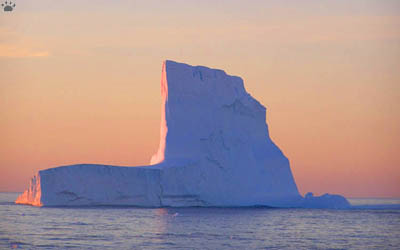
Iceberg, off South Georgia Island.
Around the Scotia Sea
The Scotia Sea is a body of water almost the size of the Western
Europe, a part of the Southern Ocean. Its borders are marked by Falkland and South
Georgia Islands in the North, South Sandwich Islands in the East, Tierra del Fuego,
Drake Passage, and South Shetland Islands in the West, South Orkney Islands and
the tip of the Antarctic Peninsula in the South.
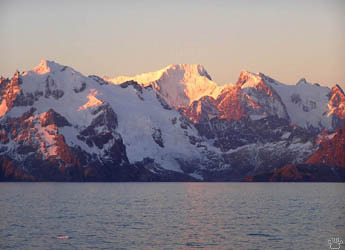
Mountains of South Georgia. |
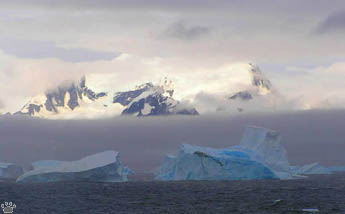
South Orkney Islands. |

Iceberg, off South Georgia Island. |
The Antarctic Convergence - a well-defined borderline
between the cold Antarctic and relatively warm South Atlantic waters - crosses
the Sea, while constant western winds create strong upwellings along the shores
of its islands. All that, combined with dramatic relief above and below the surface,
makes the Sea and its islands one of the most productive and scenic parts of the
World's oceans. |
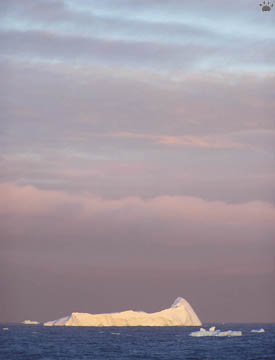
Iceberg, off the Antarctic Peninsula. |
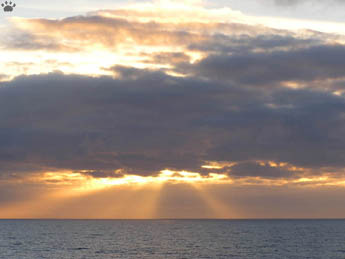
Sunrise, Scotia Sea. |
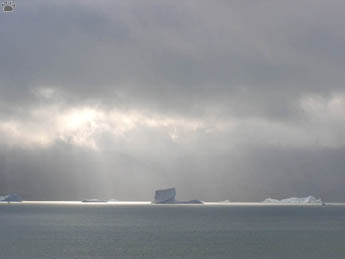
Icebergs, South Georgia. |
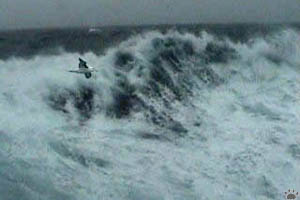
Black-browed albatross (Diomedea melanophris), Scotia Sea. |
It is also known for bad weather. Fierce storms
roll over almost nonstop, but you can also get a sunny day once in a while. |
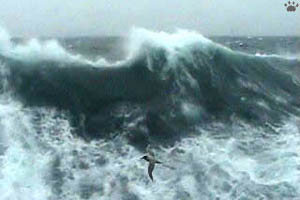
Light-mantled sooty albatross (Phoebetria palpebrata),
Scotia Sea. |
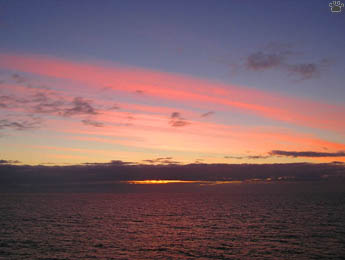
Sunset, Scotia Sea. |
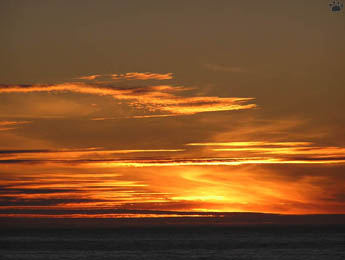
Sunset, Scotia Sea. |

High-altitude clouds, Scotia Sea. |
Most of the islands and their offshore waters
are protected as either British territory or areas covered by the Antarctic Non-exploitation
Treaty. However, Argentina consistently tries to undermine the Treaty by claiming
huge chunk of the Antarctic (some of it British or also claimed by Chile) as its
own. |
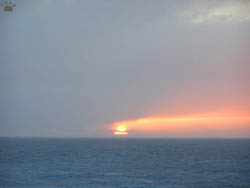
Sunrise, Scotia Sea. |

Iceberg, off South Georgia. |
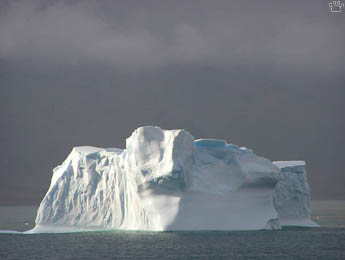
Iceberg, Scotia Sea. |
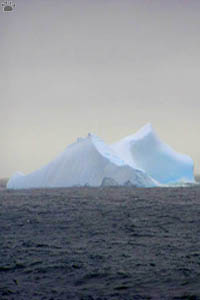
Iceberg, off South Georgia. |
To substantiate this totally unreasonable claim,
Argentina has shipped pregnant women to its "scientific" Antarctic stations
to have children born there. The stations are "Potyomkin's villages",
where cruise ships are greeted by women pretending to play snowball with pale-faced
little kids. Personally, I find such use of people as pawns in dirty political
games disgusting. Argentina was also the first (and only, so far) country to bring
war to the Antarctic. Its 1982
invasion of the Falklands, the South Georgia and the South Shetlands had left
891 dead, thousands wounded, and serious environmental damage. Despite the sound
defeat by UK forces, Argentina hasn't dropped any of its claims, and the propagandist
hysteria inside the country is still intense. |
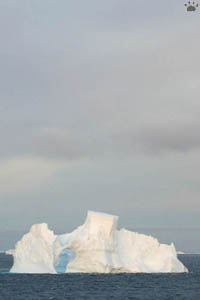
Iceberg, off South Shetland Islands. |

Weddell's seal (Leptonychotes weddelli), Hope Bay, Antarctic
Peninsula. |
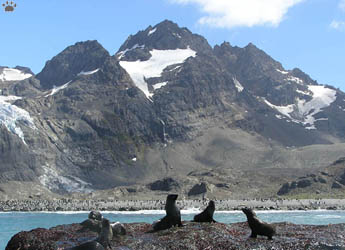
Antarctic fur seals (Arctocephalus
gazella), Grytviken, South Georgia. |
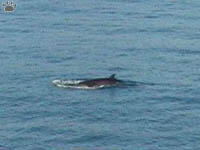
Antarctic minke whale (Balaenoptera
bonairensis) is the species currently targeted by
Japanese whaling industry. Off South Georgia. |
Another country threatening the ecological integrity
of the Antarctic is Japan. It uses a legal loophole to conduct large-scale "scientific"
whaling in the Southern Ocean. More a chauvinistic political show than a commercially
sound operation, this assault on the environment is also surrounded by lies, propaganda
and corruption. It is accompanied by a nationwide campaign aimed at developing
taste for whale meat in young kids by serving it in schools. |
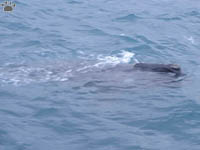
Southern right whale (Eubalaena australis)
is still recovering from near-extermination
by whalers. Off South Georgia. |
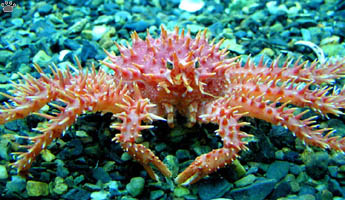
Antarctic king crab (Lithodes antarcticus). |
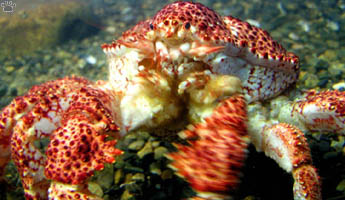
Emperor crab (Peltarion spinosulum). |

Tractor crab (Peltarion spinosulum). |
Well, so far the Antarctic Treaty stands; Britain
is doing a good job of protecting its fisheries, islands, and all the creatures
inhabiting them. The spectacular wildlife of the Scotia Sea is still there. Getting
to see these wild and beautiful places isn't easy or cheap, but it is possible. |
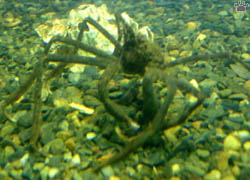
Antarctic spider crab (Eurypodius latreillei). |

Cruise ship Marco Polo in Hope Bay, Antarctic Peninsula. |
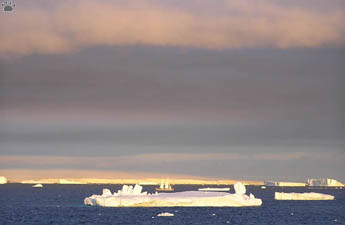
A small yacht navigating Bransfield Strait, off Antarctic Peninsula. |

Cruising Cumberland Bay in a zodiac, South Georgia. |
The Scotia Sea is the most accessible, and certainly
the most visited, part of the Antarctic. Each year, thousands of people visit
it on board cruise ships and fishing vessels. A few travel by yachts, fly to the
Falklands or to the hotel at one of Chile's research stations. There are 15 stations
around the Sea, and a tiny village at South Georgia. Tierra del Fuego and the
Falklands have sizable resident population and a few cities. |
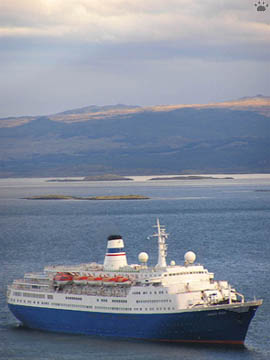
The Marco Polo in Beagle Channel, Tierra del Fuego. |
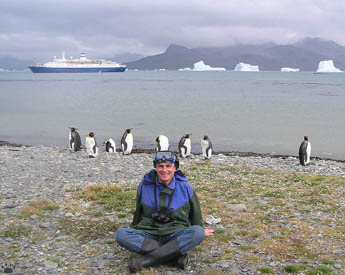
Summer days at South Georgia can be warm enough for snorkeling. |
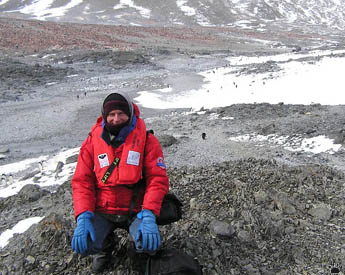
Visiting Adelie penguins colony at Hope Bay, Antarctic Peninsula. |
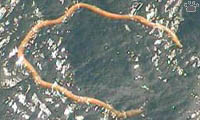
Three meter-long nemertine (giant predatory
marine worm), Hope Bay, Antarctic Peninsula. |
In 2005, I had a chance to travel to Patagonia,
Tierra del Fuego, the Falklands, South Georgia, the South Orkneys, the tip of
the Peninsula and some of the South Shetlands. The photos are in the following
pages (except for most mammal pictures, which are in Marine
Mammals page). |
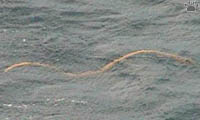
Three meter-long nemertine (giant predatory
marine worm), Hope Bay, Antarctic Peninsula. |

Visiting Magellanic penguins colony, San Julian.
Part 2: Penguins
Home
|